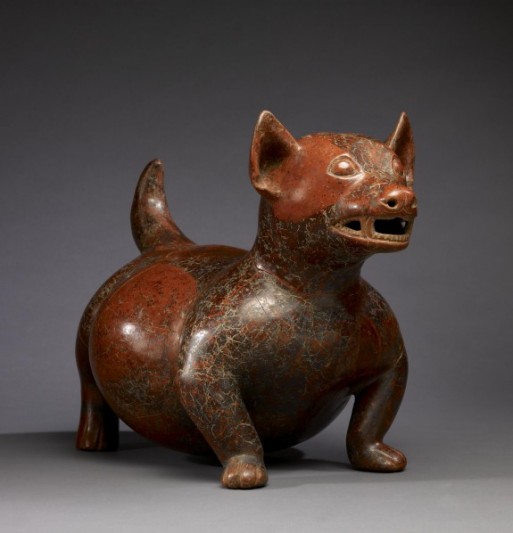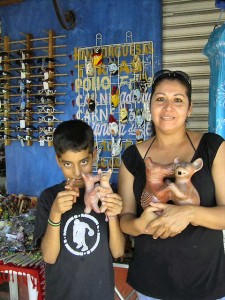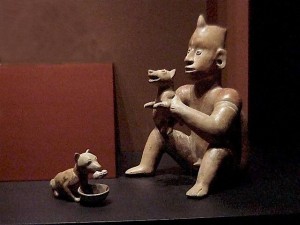When we look at the relationships humans create with their objects, we almost always uncover a sort of totemism—a deeper, worshiped meaning applied to something inanimate. And while the word totem may evoke the towering, carved pine poles of Alaska, they aren’t limited to Inuit culture. In ancient Mesoamerica, the Atzec and Mayan peoples believed that a xolo or Colima dog was one of the most important guides to the Mexican afterlife. Today, archeologists have found little sculptures of these Colima dogs dotted around Mesoamerica. Eventually, they discovered that these were not mere sculptures, but effigies: true totems of guidance and companionship for the Aztec and Mayan journeys into death.
The colima dog remains an important artistic artifact of the mesoamerican peoples.
(Credit: http://www.gomanzanill.com)“…These were not mere sculptures, but effigies: true totems of guidance and companionship for the Aztec and Mayan journeys into death.”
Though an ancient animal, the effigies of the Aztec and Mayan Colima dogs strike a resemblance to a more contemporary pooch: the Chihuahua. With its puckish ears and grinning mug, the xolo dogs were indeed the first Chihuahuas on our planet.
The ceramic sculptures are believed to embody a few creation and death traditions of Mesoamerican peoples. Though humble and austere in their design, the sculptures are tied to one of the most important deities: Xolotl, god of death. “This deity,” says the Walters Art Museum in Baltimore, “was believed to lead the soul on its journey to the underworld [with the xolo dog].”
“With its puckish ears and grinning mug, the xolo dogs were indeed the first Chihuahuas on our planet.”
These xolo dogs, says the Museum, had very special relationships to humans. Archeologists have uncovered many Colima sculptures that don “humanoid masks,” which tells us that these dogs weren’t simply an afterthought in the Aztec and Mayan belief systems surrounding death. In the living, quotidian life, these ancient Chihuahuas were beloved as watchdogs, protecting their respective families with integrity.
One origin myth from the Sierra Madre Mountains even holds that the xolo dog transformed itself into the “first wife” of the region’s people. On a practical level, it was also common to raise xolo dogs for the dinner table. It may seem contradictory for a culture to consume that which it holds so close to the divine – but this is a rather ethnocentric perspective; why can’t something that nourishes our spiritual needs also feed us in a more literal, yet just as essential, way?
“…why can’t something that nourishes our spiritual needs also feed us in a more literal, yet just as essential, way?”
These ancient Chihuahuas have made a touching addition to our knowledge of ancient Mesoamerican art – and they prompt us to consider the nature of the meaning we apply to the things that make up our world. Even if it’s just a spoiled pooch in the handbag of an LA socialite.
Related SevenPonds Articles:
- Frida Kahlo: In Conversation with Death
- Unlocking the Meaning of Dia de los Muertos
- The Little Known Ritual of Endocannibalism

 An Ancient Art: The Xolo Dog Sculptures
An Ancient Art: The Xolo Dog Sculptures





 Recovering Cremation Remains After the Los Angeles Fires
Recovering Cremation Remains After the Los Angeles Fires
 “As Tears Go By” by Marianne Faithfull
“As Tears Go By” by Marianne Faithfull
 “The Sea” by John Banville
“The Sea” by John Banville














